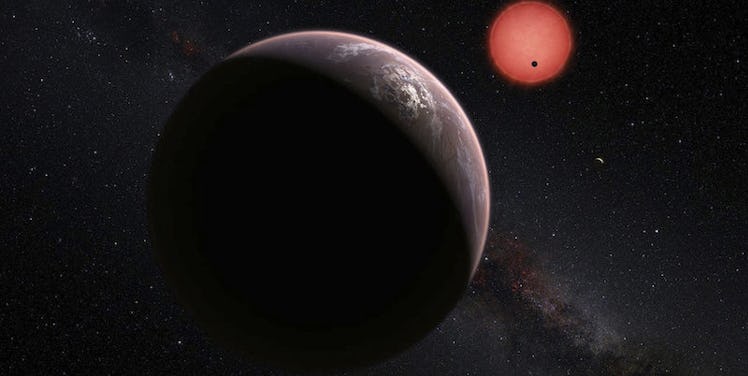
NASA's Kepler Space Telescope Apparently Found Over 1,200 New Planets
On Tuesday, NASA announced the addition of 1,200 new planets to its roster of known planets orbiting alien stars. Using data collected by the futuristic wonder that is the Kepler space telescope, we've effectively doubled our knowledge of alien planets.
This marks one more step toward taking destination weddings to space and effectively making "Interstellar" a reality. As NASA's chief scientist, Ellen Stofan, says,
This gives us hope that somewhere out there, around a star much like ours, we can eventually discover another Earth.
To reach these groundbreaking findings, Kepler has been one busy little bee. Of the 4,302 potential planets detected by the telescope, 1,284 candidates have a 99 percent chance of being a verifiable planet. And of those 1,200 or so, three dozen planets are located in the "habitable zone" where the possibility of life is present. Three dozen.
Kepler mission scientist Natalie Batalha also told reporters that 550 of the newly discovered planets could be rocky like our home planet Earth due to their similar sizes. And how's this for a bit of mind-blowing information? According to Batalha,
When you look up in the sky you're not just going to see pinpoints of lights and see them as stars, you're going to see pinpoints of light as planetary systems.
What the actual what, you say? Yes, Kepler detects these alien planets by measuring every teeny, tiny diminishment of light that happens as a result of planets passing in front of their respective stars. Mercury, for example, made its rare transit across of the face of our sun just last Monday, though you probably didn't notice it being any less bright out.
Based on a few quick calculations, Batalha says there could be more planets than stars in the universe, and that means there could be “tens of billions of potentially habitable” worlds floating around space that we have yet to discover. Although our current data sample is small compared to the massive scope of our galaxy, what we know so far suggests “about 24 percent of the stars harbor potentially habitable planets that are about 1.6 times the size of the Earth.”
I think that's just about all the holy sh*t information we can handle for today. When you're done putting your brain back together, head over to NASA to get the full scoop on its latest findings.
Citations: More than 1,200 new planets discovered through Nasa's Kepler space telescope (The Guardian)